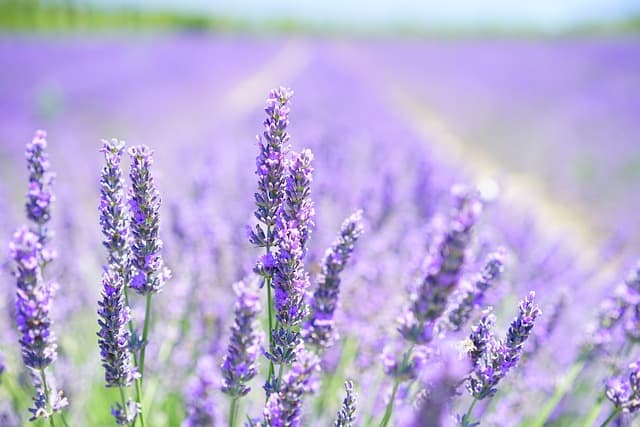Lavender is a popular and versatile herb that not only adds aesthetic appeal to any indoor or outdoor garden but is also highly regarded for its distinctive scent and stress-relieving properties. It can even be added to food or beverages for a unique and healthy twist.
But have you ever come across flowers that look like lavender so closely that it warranted further inspection?
These lookalikes are often very similar to lavender in terms of its physical characteristics, but lack the aroma and benefits of true lavender.
As popular as lavender is, there are several lookalikes that inexperienced gardeners may mistake for lavender. These lookalikes may resemble lavender in its leaves, flowers, structure, or a combination of any of its features. The flowers most mistaken for lavender are:
- Russian sage
- Hyssop
- Rosemary
- Wisteria
- Texas bluebonnets
- Pitcher sage
- Catmint
- Purple salvias
- Thai basil
- Meadow sage
The rest of this article will tell you all about each of these common lookalikes, whether they are related to lavender, and growing tips in case you have a spot that is unsuitable to grow lavender but you want a similar aesthetic.
See similar posts:
Lavender: A Brief Description
Lavender is a perennial herb touted for its medicinal effects and characteristic calming scent, tiny purple blossoms, and long, thin silvery stalks. Native to Mediterranean climates of southern Europe, northern Africa, and the Canary Islands, lavender is related to the mint plant and is considered an Old World plant.
Lavender grows in shrubs and can grow up to two feet in height and width. It grows best in sandy, rocky, and well-drained soil and is considered a relatively low-maintenance plant.
Lavender requires little to no fertilizer and attracts pollinators such as bees, butterflies, and hummingbirds. They also repel pests such as aphids from gardens.
Lavender thrives best in USDA zones 5 – 8.
10 Flowers that Look Like Lavender
1. Russian Sage
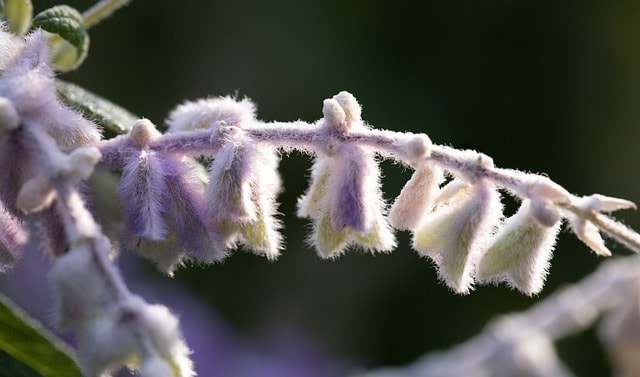
Out of all of the flowers on this list, Russian sage is arguably the one that most resembles lavender. A misnomer, Russian sage is native to Afghanistan and isn’t related to the sage plant.
With tiny, pale purple flowers that grow lengthwise along tall, narrow, silvery stems, Russian sage grows in the same arid climates as lavender. It is particularly hardy and drought tolerant – making it a great option for xeriscape gardens and soil with high salt content.
This perennial shrub has a subtle aroma similar to lavender, attracts pollinators, and even repels insects such as aphids, cabbage worms, fleas, ants, ticks, and white flies. It can grow quite large – up to four or five feet in height – and the dried flowers are edible, often used as garnish in salads and artisanal breads.
Russian sage grows in a wide range of climates, growing best in USDA zones 5 – 10.
2. Hyssop
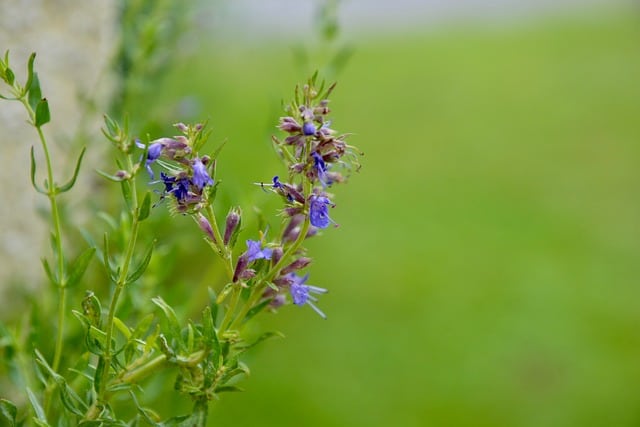
Hyssop is a perennial related to lavender, as it also belongs to the mint and sage family. Its tiny purple flowers have a similar shape to lavender, as do its narrow leaves. However, hyssop leaves are a more vibrant green rather than the silvery color of lavender leaves.
While hyssop flowers are usually purple, they also come in pink, blue, and white. Hyssop attracts pollinators and flourishes in flower beds without crowding other plants.
Hyssop has uses in homeopathic medicine by aiding in treatment for respiratory problems and liver disease. The leaves – when young – can be added to soups and salads, and even help aid in healthy digestion.
Hyssop tolerates a wider range of climates than lavender, including colder climates. It thrives in USDA zones 3 – 11.
3. Rosemary
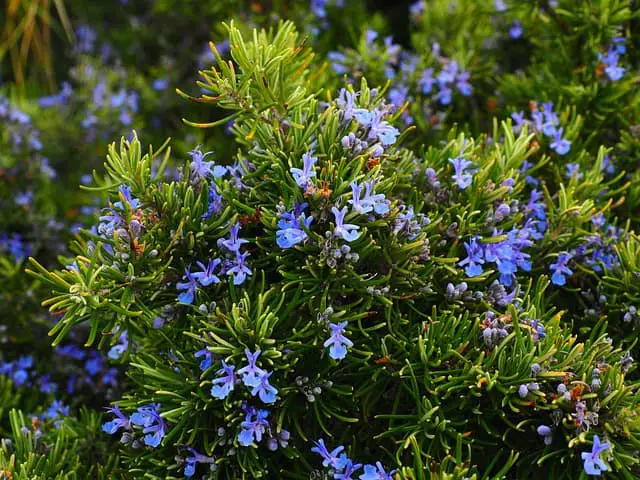
This aromatic and versatile herb is similar to lavender in both appearance and uses. Like lavender, rosemary is native to the Mediterranean.
However, rosemary leaves are darker, thinner, and resemble shortened pine needles. It is a low-maintenance herb that doesn’t require much water and is relatively slow growing. It grows well in containers and in garden beds, and its aromatic nature makes it an ideal choice for planting along walkways.
Rosemary is a great companion plant for lavender, as both thrive in the same growing conditions. Rosemary is one of the most versatile herbs, commonly used to season roasted vegetables, poultry and lamb, breads, and more.
Rosemary doesn’t tolerate cold very well, though there are cold-resistant varieties available. It grows best in USDA zones 8 – 11.
4. Wisteria
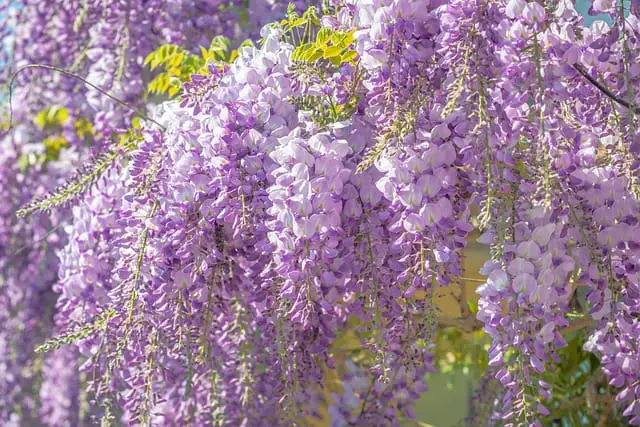
While the wisteria flowers are much larger than lavender, their overall shape and color is strikingly similar. Wisteria comes in three colors: pale purple, pink, and white. It grows in a vine, and is a great choice for planting to climb up columns and lattice work.
Wisteria is considered an ornamental plant and gives off a sweet aroma similar to lavender. It is native to many regions, such as Asia, North America, and the Middle East. It thrives in USDA zones 5 – 9.
5. Texas Bluebonnet
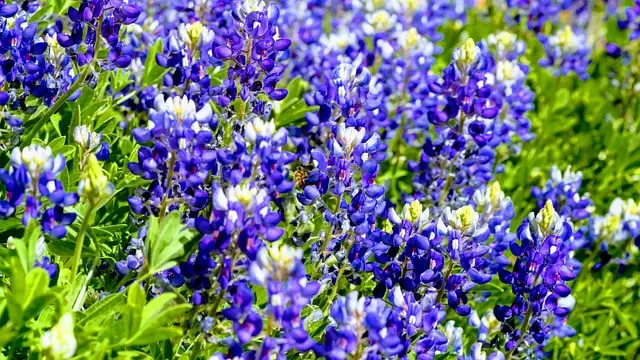
As its name suggests, the bluebonnet is the state flower of Texas and is native to the southern/central US and northern Mexico. This wildflower has pointed leaves and small, velvety blue-violet flowers with a distinctive white center. The leaves and stems are pointed and pale green.
Like lavender, Texas bluebonnets are fragrant and grow well with well-draining soil with little water. They are also great pollinators and attract bees and butterflies. However, the flowers and leaves are mildly toxic and should be avoided – especially by young children, who are particularly vulnerable to bluebonnet toxins.
Texas bluebonnets thrive in USDA zones 6 – 8.
6. Pitcher Sage
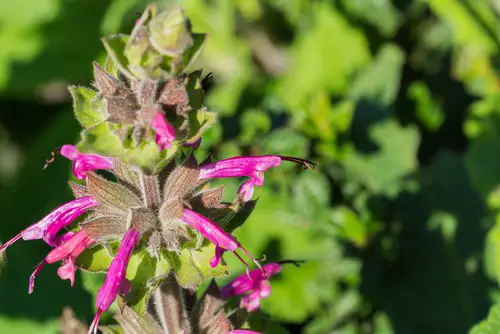
Named for the shape of their small blue-violet flowers that grow in clusters along tall, narrow green stalks, pitcher sage is native to the southwestern United States. It grows in shrubs up to three feet in both height and width and, like lavender, belongs to the mint family.
Pitcher sage’s lance-shaped leaves are a pale silver green. It’s deer resistant, drought-resistant, and attracts pollinators – making this plant a great option for xeriscape and butterfly gardens. Plant in a sunny location with well-draining soil.
Pitcher sage grows best in USDA climates 5 – 9.
7. Catmint
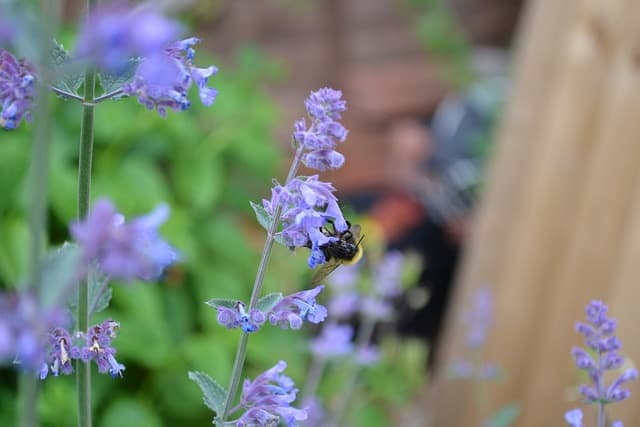
Like lavender, catmint is a member of the mint family. It is a drought-resistant aromatic plant with lance-shaped green leaves and small, pale purple flowers that grow in clusters along pointed stalks. It is native to the Mediterranean region of southern Europe and northern Africa.
While catmint is related to catnip, it isn’t as fragrant – though cats still enjoy munching on it. Catmint thrives in USDA zones 4 – 8.
8. Purple Salvia
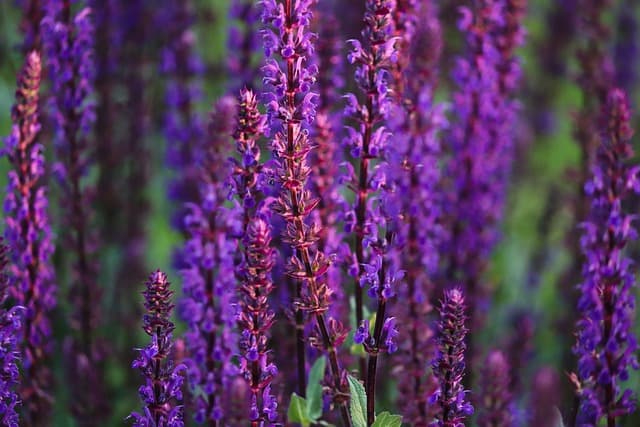
As a member of one of the largest flowering plant families, purple salvias are very similar to lavender in aroma and appearance. There are several purple varieties of salvia, but the one that most strikingly resembles lavender is the aptly named Salvia lavandulifolia.
With its pointed, silver-green leaves and clusters of pale purple flowers, it can be difficult to tell the difference between purple salvias and lavender. Salvia lavandulifolia shares the same growing conditions and is native to the Mediterranean.
Purple salvias grow best in USDA zones 4 – 8.
9. Thai Basil
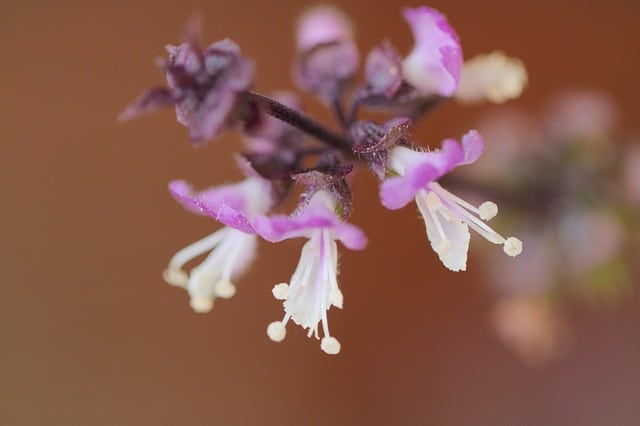
Thai basil differs from regular basil in the size of its leaves and small clusters of flowers. Used mainly in Thai cuisine, it has a sweet aroma similar to lavender and reddish green leaves narrower than traditional basil. Its flowers are small and range from pale purple to pink to white.
Thai basil requires full sun and grows in hot, humid climates in USDA zones 10 – 11.
10. Meadow Sage

A member of the salvia and mint family, meadow sage is an aromatic plant with medicinal properties. Like lavender, it has narrow silvery leaves with clusters of small, blue-violet flowers. It grows about two feet in height.
Native to Europe, meadow sage grows throughout North America and is a common addition in flower gardens. It grows best in full sun with well-draining soil, just like its fragrant lookalike. Not only is it used for medicinal reasons, but it’s also a culinary ingredient and used in incense.
Conclusion
If you live in an area that isn’t suitable for lavender to grow, but you still want a similar aesthetic and aroma, consider one of the plants from the above list. There are many plants that resemble lavender not only in appearance, but also in aroma and uses.
Frequently Asked Questions
How can I tell the difference between lavender and a lookalike?
Lavender grows in shrubs about two feet tall and has narrow silver stems, lance-shaped leaves, and clusters of tiny pale purple flowers. The most distinguishing feature of lavender is its signature smell.
What are the benefits of cultivating lavender in my home or garden?
Lavender attracts pollinators such as bees and butterflies while simultaneously repelling pests such as fleas, ticks, aphids, cabbage worms, and white flies. Its calming aroma works well as a stress reliever, and you can add it to dishes.
What are the benefits of cultivating lavender in my home or garden?
Lavender attracts pollinators such as bees and butterflies while simultaneously repelling pests such as fleas, ticks, aphids, cabbage worms, and white flies. Its calming aroma works well as a stress reliever, and you can add it to dishes.
In which environments does lavender grow best?
Lavender grows in sunny, arid climates with well-draining soil. It thrives best in USDA zones 5 – 8.

Hey, I’m Lisa and I’ve been an avid gardener for over 30 years. I love writing, talking and living in the garden! Feel free to connect with me on my socials below

